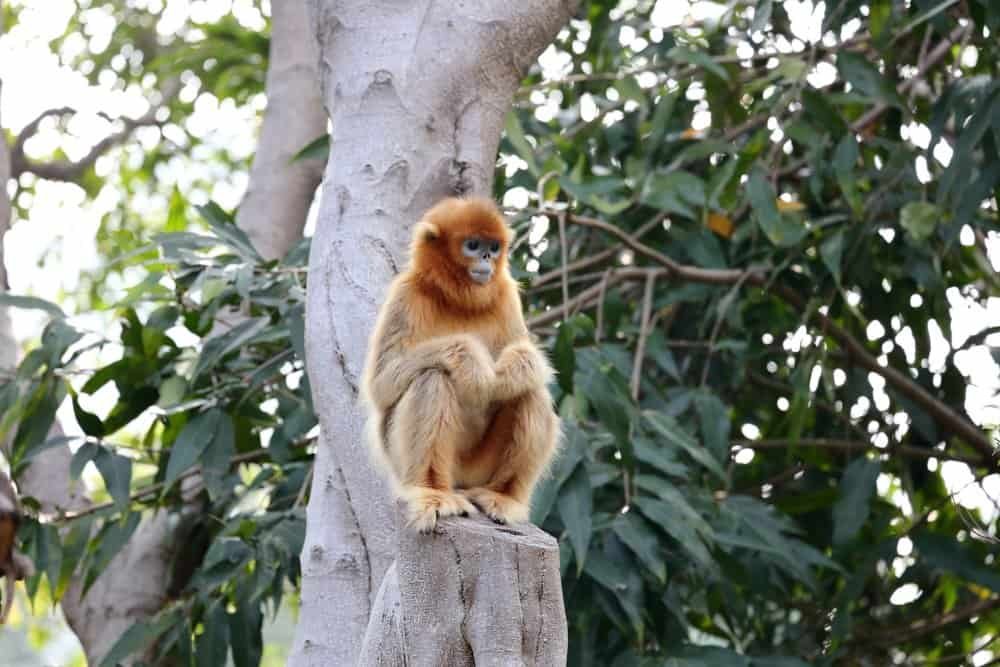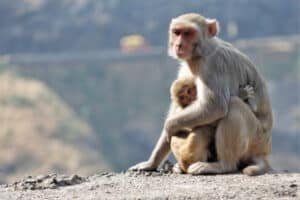Have you ever wondered How Many Golden Monkeys Are Left In World? Golden monkeys, also known as snub-nosed monkeys, are a species of Old World monkey native to the high mountains of central and southwestern China. They are easily recognizable by their striking golden fur that covers most of their body except for their face, hands and feet.
Golden monkeys are considered an endangered species as they only live in the Virungas and come to about 4000 animals in total. Golden monkeys can be found in in the Virunga volcanic region that spans from Northern Rwanda, Eastern Congo and Southwestern Uganda.
Table of Contents
How Many Types Of Golden Monkeys Species Are There
There are three species of golden monkeys:
- The Golden Snub-nosed Monkey (Rhionpithecus roxellana)
- The Grey Snub-nosed Monkey (Pygathrix cinerea)
- Tonkin Snub-nosed Monkey (Rhinopithecus avunculus)
The Golden snub-nosed monkey, also known as Chinese golden monkey, is the most widely distributed species of the three. They are found in central and southwestern China at elevations ranging from 1,500 to 3,400 meters above sea level.
The grey snub-nosed monkey is primarily found in southern China, while only a small population can be found in Vietnam. The Tonkin Snub-nosed Monkey is the most critically endangered species among the three, with only about 250 individuals left in the world.
Why Are Golden Monkeys Endangered

The main threat to golden monkeys is habitat loss due to human activities such as deforestation and agriculture. The expansion of agriculture and logging industries has led to a significant decrease in their natural habitat, making it difficult for them to find food and shelter.
Moreover, golden monkeys are also hunted for their fur and meat. In some cultures, their body parts are used in traditional medicine, which has contributed to their declining population.
The Impact Of Habitat Distribution, Hunting And Illegal Trade
As mentioned, one of the main threats to golden monkeys is the loss of their natural habitat. These monkeys are found in a small area of central and southwestern China, specifically in the provinces of Sichuan, Gansu and Shaanxi.
The distribution of their habitat is limited and fragmented due to human activities such as agriculture, logging and infrastructure development. This leaves the golden monkeys with less space and resources to survive in, leading to a decline in their population.
Historical Population Trends Of Golden Monkeys
There is limited information on the historical population trends of golden monkeys. However, it is believed that their population has been decreasing steadily over the years due to habitat loss and hunting.
1.What Was The population Of Golden Monkeys In 1960?
In the 1960s, there were an estimated 40,000 golden monkeys in the wild. By 2017, this number had dropped to only about 4,000 individuals. This sharp decline in population is a cause for concern, and urgent conservation efforts are needed to save this endangered species.
Effect Of Climate Change On The Golden Monkey’s Lifespan

Climate change is another factor that may have an impact on the lifespan of golden monkeys. As these monkeys are found in high-altitude regions, they are highly adapted to cooler temperatures. However, with the effects of climate change, temperatures in these areas are rising, making it difficult for the monkeys to survive.
Moreover, changes in weather patterns also affect their food sources and breeding patterns, leading to a decline in their population. As such, it is crucial for conservation efforts to not only address the immediate threats but also consider the long-term effects of climate change on golden monkeys.
What Is The Main Cause Of Death For Golden Monkeys?
The main cause of death for golden monkeys is habitat loss and human activities. As mentioned earlier, the expansion of agriculture and logging industries has led to a decrease in their natural habitat, making it difficult for them to survive.
However, other factors such as climate change, disease outbreaks and competition with other species may also contribute to their declining population. It is essential for conservation efforts to address all of these factors to ensure the survival of golden monkeys in the wild.
How Many Golden Monkeys Are Left In World? How Many Golden Monkeys Are Killed?

It is difficult to determine the exact number of golden monkeys killed each year due to hunting and illegal trade. However, it is estimated that hundreds of golden monkeys are killed every year for their fur and body parts.
Moreover, with their limited population, even a small number of deaths can have a significant impact on the survival of this endangered species. It is crucial for stricter laws to be implemented and enforced to prevent further killings of golden monkeys.
Conservation Efforts
To protect the golden monkeys and increase their population, conservation efforts have been put in place. These include establishing protected areas such as national parks and reserves to preserve their habitat. Conservationists also work with local communities to promote sustainable agriculture practices that do not harm the monkeys’ habitat.
Moreover, efforts are being made to educate people about the importance of these animals and discourage the use of their body parts for traditional medicine. Organizations such as the World Wildlife Fund (WWF) and International Union for Conservation of Nature (IUCN) are actively involved in conservation efforts for the golden monkeys.
Final Thoughts
With only about 4000 individuals left in the world, golden monkeys are undoubtedly an endangered species. The main threats to their survival are habitat loss and hunting. However, through various conservation efforts, we can hope to protect these beautiful creatures and ensure that future generations can still admire them in their natural habitat.
It is important to continue raising awareness about the plight of golden monkeys and take action to protect them and their habitat. Only then can we ensure that these majestic animals will not disappear from our planet.
Read Also: How Many Baboons Are Left In The World?



 YouTube
YouTube 


